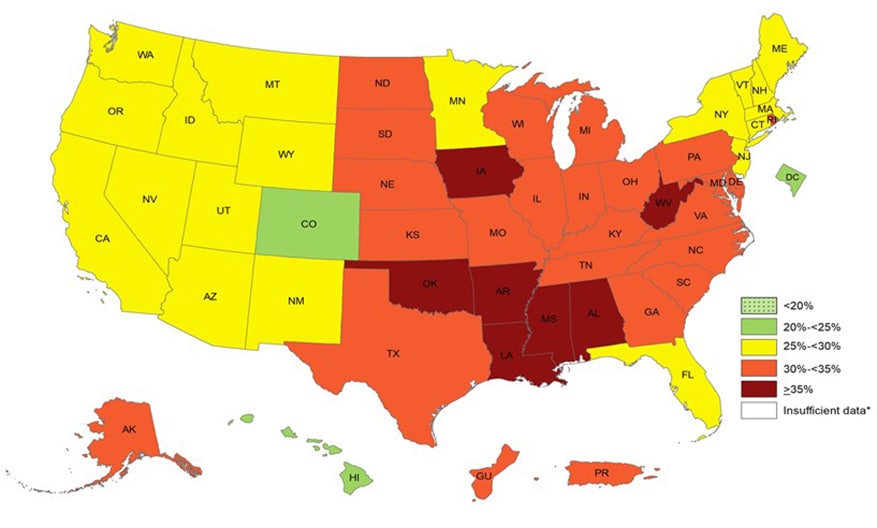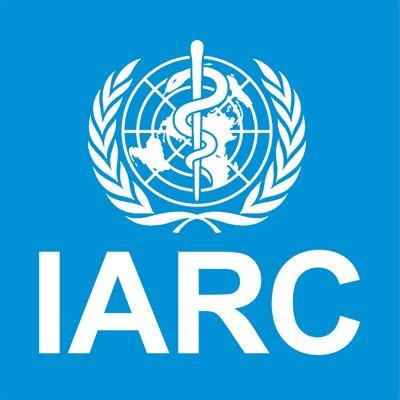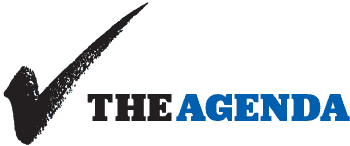Topic intro description here. Limited to 145 characters. Topic intro description here. Limited to 145 characters. Topic intro description here.
Annual Summit
The State of Data Sharing at the U.S. Department of Health and Human Services
September 2018 report from the Office of the Chief Technology Officer on the state of data sharing between agencies of the U.S. Department of HHS.
Across the twenty-nine distinct agencies of the United States Department of Health and Human Services (HHS), data essential to understanding the nation’s health are collected every day.
Whether surveillance, survey, or claims data, HHS expends an enormous amount of financial resources to report on the state of the health of the population it serves.
These data, however, are largely kept in silos with a lack of organizational awareness of what data are collected across the Department and how to request access. Each agency operates within its own statutory authority and each dataset can be governed by a particular set of regulations. As such, each discrete analysis of the data often gets reviewed for legal purposes and leads to data sharing occurring largely on a project-by-project basis. The individuals involved negotiate the nature and extent of data sharing arrangements often
A cohesive enterprise-wide data governance strategy that promotes data sharing, drives business value from leveraging data as an asset, and bases policies on evidence is essential to a long-term data-driven vision of HHS.
Research on Hybrid Information Evaluation Type Watching Technology for the Improvement of QOL of the Elderly
Research on Hybrid Information Evaluation Type Watching Technology for the Improvement of QOL of the Elderly
The increase in living alone and old households due to aging of the society has led to a decline in the quality of life (QOL) of elderly people. How to maintain and improve the quality of life for elderly people is a pressing issue of society. We watch over the elderly from both aspects of health-related QOL and subjective QOL and work on creating a social system that realizes a safe and secure life for the elderly. In this research, we promote the health information database which holds health related information in the shared database system such as the cloud by the will of the person him/herself, and develop a method for mining various kinds of life log information and medical/care related information in a hybrid manner. In this paper, we propose a remote watching method inferring resident's behavior related to the operation of electric appliances from the measurement of total load current of the household. We also attempt to perform hybrid data mining by combining subjective mood data and objective data with wearable sensors that can collect biological data. We aim to provide a system that brings a safe and secure life to the elderly by carrying out assessment and early detection of abnormal symptoms of them such as depression and dementia.
The full study can be downloaded below.
Community Partnership in Precision Medicine: Themes from a Community Engagement Conference
Community Partnership in Precision Medicine: Themes from a Community Engagement Conference
Through a community-academic planning process, the group hosted a conference on community engagement in precision medicine research. The conference focused on academic and community presentations and dialogues on trust, research ethics, and engagement strategies. Quantitative data reflected a high level of overall interest and willingness to participate in precision medicine research, and specifically the “All of Us” Research Program. Conference discussions suggested that there is a need to convey fully to community stakeholders what precision medicine is, the process of research development, and how specific community concerns will be handled. Concerns most noted were related to trust, safety, uses of data, benefits to participants and communities, and inclusion of diverse populations. Addressing such concerns, while building on community resilience and faith in the promise of science to improve health, may help achieve true engagement.
The full journal article can be downloaded below.
AACR Cancer Progress Report 2018
AACR Cancer Progress Report 2018
The American Association for Cancer Research released a comprehensive report documenting the current state of the fight against cancer with a look to the future. This includes research regarding cancer development, cancer prevention, early detection, and harnessing research discoveries for patient benefit, in addition to guidance for the future and public policy.
The full report can be downloaded below.
Detecting Depression with Audio/Text Sequence Modeling of Interviews
Detecting Depression with Audio/Text Sequence Modeling of Interviews
Medical professionals diagnose depression by interpreting the responses of individuals to a variety of questions, probing lifestyle changes and ongoing thoughts. Like professionals, an effective automated agent must understand that responses to queries have varying prognostic value. In this study we demonstrate an automated depression-detection algorithm that models interviews between an individual and agent and learns from sequences of questions and answers without the need to perform explicit topic modeling of the content. We utilized data of 142 individuals undergoing depression screening, and modeled the interactions with audio and text features in a Long-Short Term Memory (LSTM) neural network model to detect depression. Our results were comparable to methods that explicitly modeled the topics of the questions and answers which suggests that depression can be detected through sequential modeling of an interaction, with minimal information on the structure of the interview.
The full pdf from MIT can be downloaded below.
Adult Obesity Prevalence Maps
Adult Obesity Prevalence Maps
On September 12th the CDC updated their adult obesity prevalence maps, highlighting differences by state and territory for obesity by race/ethnicity. The page also presents data regarding obesity prevalence by education and age. An example map is below.
Prevalence of Self-Reported Obesity Among U.S. Adults by State and Territory, BRFSS, 2017

The full page can be viewed at this link.

Latest Global Cancer Data
Latest Global Cancer Data
Geneva, Switzerland, 12 September 2018 – The International Agency for Research on Cancer (IARC) today released the latest estimates on the global burden of cancer. The GLOBOCAN 2018 database, accessible online as part of the IARC Global Cancer Observatory, provides estimates of incidence and mortality in 185 countries for 36 types of cancer and for all cancer sites combined. An analysis of these results, published today in CA: A Cancer Journal for Clinicians, highlights the large geographical diversity in cancer occurrence and the variations in the magnitude and profile of the disease between and within world regions.
The press release includes information on the global cancer burden, the major cancer types of 2018, global patterns by level of human development, global cancer patterns by sex, and a worrying rise in lung cancer in women.
The full press release can be viewed below.

Webinar: Tools for Success with Value Based Care: A Partnership Approach to Analytics
To view presentation slides and watch a recording of the webinar, please visit the eHI Resource Center.
Risk-based reimbursement contracts are the vehicle some health systems are using to move to value-based care, prompting health systems and plans to partner and share analytic tools.
Improving Patient Matching With A Simple Plug-in.

Accurate patient matching has simultaneously become 10x more challenging and 10x more important than it was even just a few years ago. But conventional patient matching technologies have reached their breaking points, and duplicate rates are skyrocketing as a result—as are the costs associated with having duplicate records and incomplete patient records.Verato Auto-Steward is a cloud-based plugin for EHR and EMPI technologies that uses a powerful new paradigm in patient matching called Referential Matching to automatically resolve 50-75% of the toughest matches your EHR or EMPI cannot resolve.


